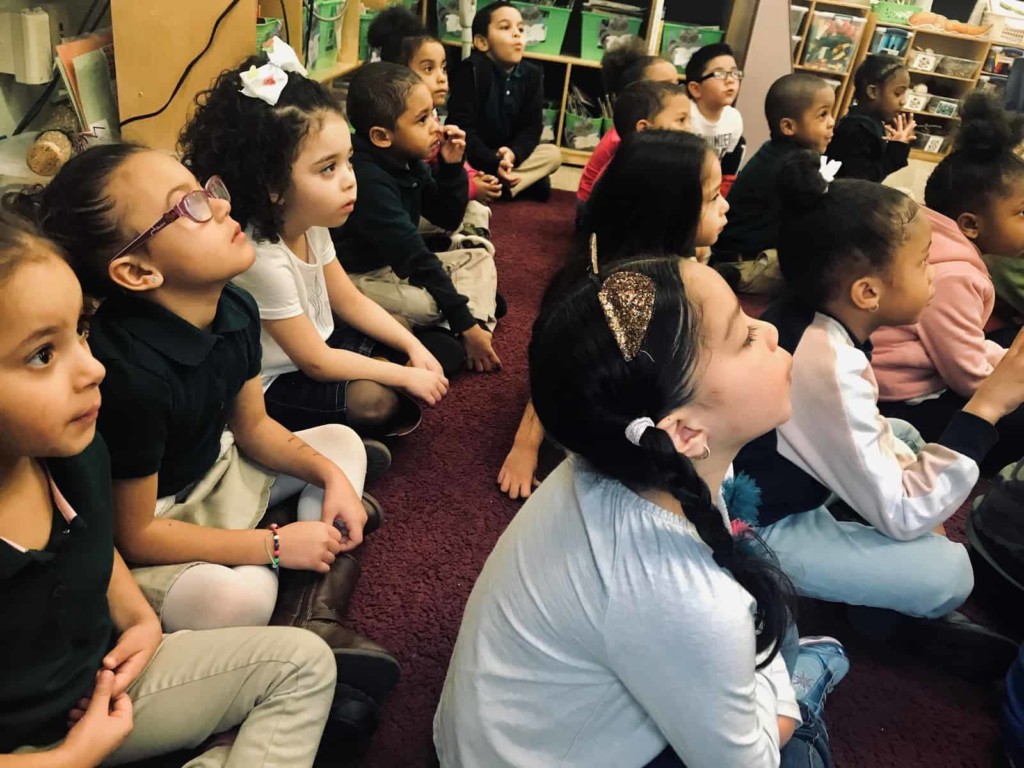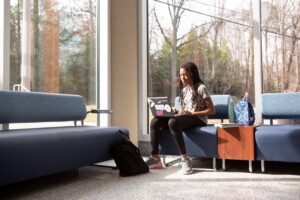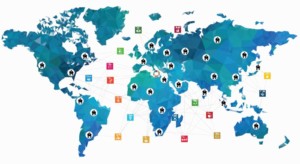Never Too Young to Be An Activist

By: Liz Pitofsky
“I’ve been waiting so long to change the world.” SLP participant, eight years old
Over the past few years, it’s been thrilling to see more and more young people speaking out about critical, often urgent, social issues affecting their schools and communities, including school segregation, gun violence, and climate change. Some of these inspiring young activists are college and high school students but many of the most powerful messages have come from children: Naomi Wadler who, at the age of 11, gave an incredible speech at the March For Our Lives about the impact of gun violence on black girls and women. Greta Thunberg who, at the age of 15, launched an international climate change movement. Mari Copeney who, at the age of eight, persuaded President Obama to meet with Flint, Michigan residents and inspired a federal response to the city’s devastating water crisis.
Some adults have expressed concern about this trend. Arguing that we should “let kids be kids,” they are nostalgic for a time when children worried about homework, not environmental catastrophes. Putting aside whether this more innocent time ever existed for many young people in the U.S., it begs the question: is there such a thing as “too young to be an activist?”
At the Service Learning Project (SLP), we believe, and our experience proves, that the answer to this question is a resounding “No!” We have helped thousands of young people, some as young as five and six years old, organize projects to solve problems in their schools and communities. Our youth-led model is the same, regardless of age; students work together to select an issue of concern, become experts through hands-on research, develop and implement a plan for positive change, and reflect on how they can build on the experience to continue to be leaders in their community.
So, how do SLP faculty engage our youngest participants, some of whom are still learning to read and write, in a project that includes extensive research?
We’ve learned a few key lessons along the way:
Define key concepts in relatable terms. And then define them again.
Five-year-olds may not be familiar with the terminology underlying action civics – such as service, advocate, and systemic change – but their everyday experiences directly relate to, and can help illustrate these concepts.
Walking a classmate to the nurse’s office; supporting a friend who is being teased on the playground; encouraging a friend who is having trouble with a classroom assignment. These are all examples of being a positive and engaged community member, interactions that can be used to explore the meaning and benefits of service.
Our youngest participants are also familiar with problem solvers in their everyday lives: teachers, the school nurse, firefighters, etc. A discussion about the roles and responsibilities of these adults in their community can help illuminate what it means to be a problem solver and leader.
A little trickier for our younger participants is the distinction between fixing and preventing a problem, the latter being the ultimate goal of an SLP project. When choosing an issue to help solve, younger students tend to focus on tangible, visible problems such as a broken classroom sink, an overflowing trash can, or paint peeling on the classroom wall. These problems are important but likely can be fixed by a conversation with the appropriate school staff. An effective facilitator will help students dig deeper to see that a visible problem can be evidence of a more systemic problem, one that could be prevented in the future.
Something as familiar as an old school picture book can help illustrate these basic concepts. Take, for example, The Three Little Pigs. This tale provides an opportunity to compare temporary fixes (rebuilding the house with straw) with permanent solutions (rebuilding with bricks). It also compares the impact of a responsive fix (rebuilding a destroyed house) with a preventative fix (changing the wolf’s behavior). Any children’s story written to help readers appreciate community and empathy, especially a story they already know, is a very effective tool in the early phase of a project. Once these concepts are introduced, children will inevitably share anecdotes of their own. These stories can be revisited as needed throughout the project to ensure mastery of fundamental concepts.
Allow students to guide the research process by planning weekly activities around their questions and concerns.
An SLP project asks youth of all ages to take a very deep dive into their selected issue during the research phase. To create an effective solution, they need to understand, among other things, why a problem is happening, who or what is being affected, and why the current approach is not working. A facilitator’s most important role is to make sure their students are driving the information-gathering process. Middle and high school youth can easily generate research questions and conduct much of the research themselves through articles, websites, surveys, interviews, and more. Facilitators can adapt these same resources to make them age-appropriate for older elementary school students. However, for our youngest participants, who are not yet reading or writing, a different approach is required.
With our youngest students, SLP faculty rely more heavily on oral and visual research tools – such as illustrations, videos, and games – and less on literacy-based activities such as annotating articles and responding to writing prompts. Videos about their selected issue, especially those that include children, are informative and thought-provoking and, as discussed above, can be viewed multiple times to ensure comprehension. When planning research activities, our faculty also consider the social development of younger students, many of whom are not yet accustomed to sitting still for extended periods of time, detailed instructions or participating in small-group discussions. Shorter games, for example, a fact vs. myth game during which students are encouraged to move around the room based on whether they think a statement is true, generate much excitement and reflection.
Make detailed plans, and then be ready to let them go.
Project-based learning can be messy, regardless of the age of the participants. But the consistent message to students needs to be: “You are in charge.”
Facilitators should prepare a detailed plan for each meeting, to make sure students stay engaged, but they also need to be comfortable veering off course. Abandoning a planned activity because students are not enthusiastic, or because they are drawn to a related but different topic, is not a failure – it’s a powerful reminder that they are leading the process.
Another strategy is to prepare and give students a few options, reiterating that it is their choice. An activity they do not select if needed, can be revised for a later session. It often takes a few sessions for students (of all ages) to believe that they really are in charge but invariably, once they truly appreciate the project is youth-driven, they are not only thrilled but also more eager to share their ideas.
There may be some setbacks in the process, but the benefits are profound.
The goal is not to have flawless sessions but for the overall experience to change young people’s perceptions of themselves and their peers. Contrary to burdening students with “adult problems,” we have found that action civics is a powerful antidote to the anxieties children and teens have about complicated social problems – which may or may not affect them personally – but about which they are well aware. The experience builds confidence and self-esteem as well as invaluable skills such as critical thinking, empathy, teamwork, and leadership. Youth of all ages complete the experience feeling more optimistic about their ability to solve problems, and more determined to do so. These lifelong skills not only benefit individual students but help build a society of active community members who take seriously their responsibilities as engaged citizens.
For more, see:
- Youth Empowered For Social Change
- Empowering Students Through Choice, Voice and Action
- Empowering Students and Teachers for the 21st Century
Stay in-the-know with innovations in learning by signing up for the weekly Smart Update.
Liz Pitofsky is founder and CEO of the Service Learning Project. Follow her organization on Twitter: @TheSLPNYC.







0 Comments
Leave a Comment
Your email address will not be published. All fields are required.